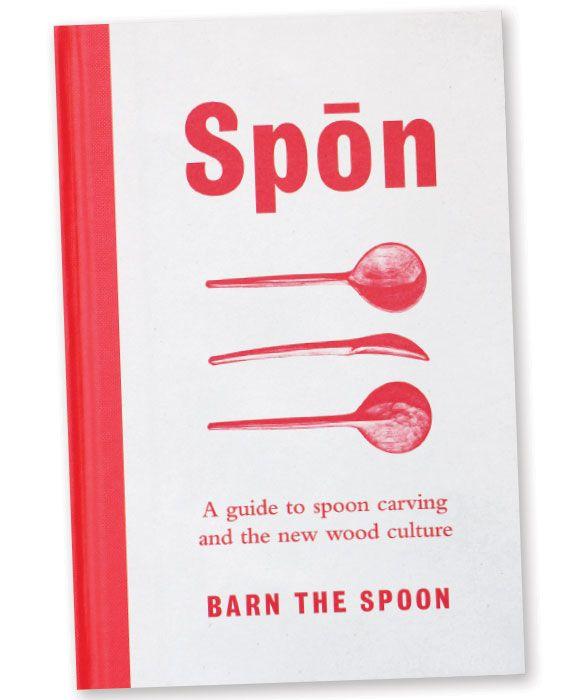An inspirational guide to spoon carving

An inspirational guide to spoon carving
Mark Cass looks at a great new book written by London’s most famous and charismatic spoon whittler, Barn the Spoon
When I first picked this book up I felt there was something special about it. Not just the thick cover boards and the design and layout, but after reading a few pages my initial feelings were confirmed; it seemed to touch me in a way few other woodworking books have come close to managing. More than just a guide to making spoons, it reads like a book of its time, and one in which Barn has managed to convey a real sense of optimism in the possibility of a radical change in how we go about our lives. It gives hope and encouragement and discusses the benefits of a gentler and more natural way of life. It’s quite an achievement and yet what Barn talks about is perfectly in tune with many others of this new generation of craftspeople.
Transcending the divide
The majority of woodworking books concentrate solely on the technical aspects of a specific branch of the craft, and this is mostly what we’re all looking for in an instructional guide. It’s likely that such a book would have little appeal to anyone without an interest in the subject, and afford them no more than a few moments of novel and casual entertainment. Some books, however, do manage to transcend the divide between enthusiast and neutral reader, and offer up more than just a step-by- step guide on ‘how to do it’. Such a book is this one, and along with excellent instructions, Barn the Spoon effortlessly evokes an image of the world which, while not actually Utopian, is the sort of place that we’d all like it to be – and believably so.
Anyone new to the subject could be forgiven for thinking that there’s not too much to carving a spoon, and it’s true, in some ways – certainly tools and equipment – there is very little that’s required. It’s only when you see the end product, the spoon itself, as being part of a much larger and cyclical picture that the true value of spoon carving can be perceived and appreciated.

Barn describes a great many tried and tested axe and knife techniques, all designed to make the job easier and safer
A fascinating process
As well as telling the story of his route into spoon carving, Barn manages to convey his enthusiasm for a fresh way of looking at things as he describes the fascinating process of making this most basic and humble of human artefacts. He talks of his influences and describes in detail the manufacture of 16 of his favourite spoons, and all of the knife and axe techniques that can be used to make them.
Speaking as one who has recently had a taste of spoon making, I can’t recommend it highly enough; working with green wood is a real delight and a far cry from carving seasoned timbers. Turning out a batch of potential gifts not long ago, I was surprised at how quickly each job progressed and, even though I had to resort to the bandsaw from time to time (referred to by Barn as a ‘distraction’ from the real joy of sculpture), the carving was more of a joy than I had imagined.

Just one of the 16 spoons Barn describes in detail
In summary
Barn’s is truly an impressive book and will surely remain the spoon carver’s favourite guide for many years to come. Myself, I’m currently looking out for a new axe.
FURTHER INFORMATION
Price: £20 (plus P&P)
Web: www.barnthespoon.com
Details of courses, tutorials and the Thousand Spoon Project can also be found on the website
Read more in The Woodworker August 2017
For more great articles subscribe to The Woodworker today
- Log in or register to post comments









